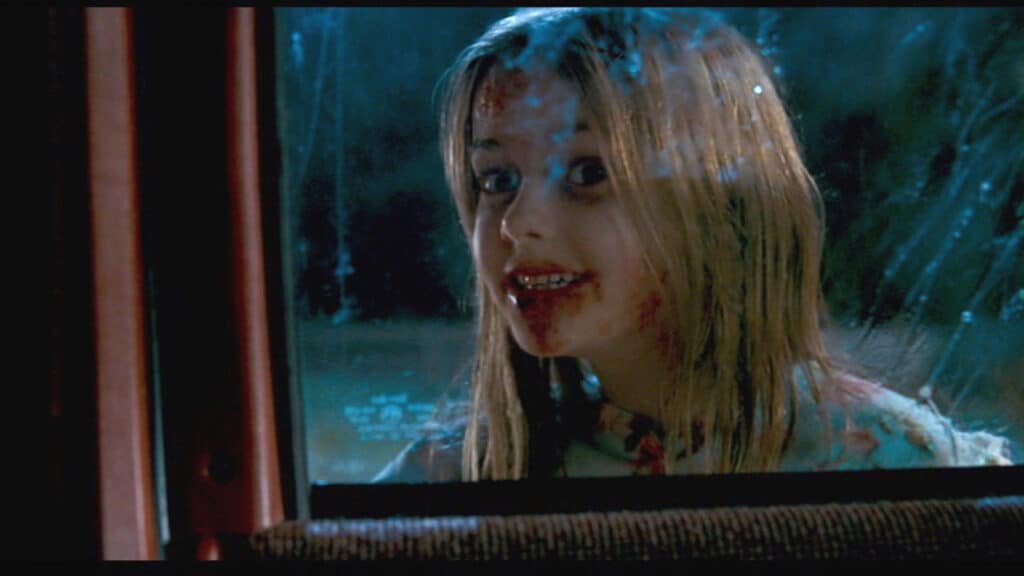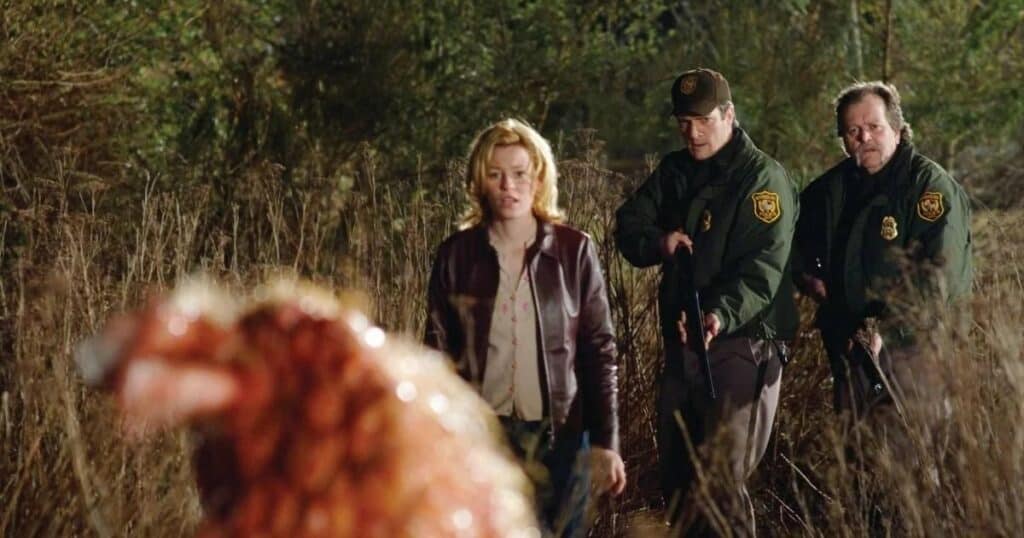Entertainment - Media News Watch originally published at Entertainment - Media News Watch
The Slither episode of WTF Happened to This Horror Movie? was Written and Edited by Ric Solomon, Narrated by Travis Hopson, Produced by Lance Vlcek and John Fallon, and Executive Produced by Berge Garabedian.
James Gunn has become a huge household name in the superhero world. From 2010’s critically panned, cult favorite film, Super, to making the Marvel Cinematic Universe’s best trilogy in Guardians of the Galaxy, to now becoming co-CEO of DC Studios and even has a Superman project up his sleeve.
I bet you’re wondering where James honed his craft to become the director he is today. Well, his tenure with Troma Films is well documented but it really all started with his directorial debut, Slither (watch it HERE). It’s a film that pays homage to The Blob and feels like a mix of Dawn of the Dead as well as Ridley Scott’s 1979 Sci-Fi epic, Alien. It was a big flop at the time it was released in theaters, but it has since gained a cult audience. In this episode, we’re going to dive right in and find out WTF Happened To This Horror Movie. On this episode we’re going to dive right in and find out WTF Happened To This Horror Movie.
In the early 2000s, James Gunn’s career was marked by his involvement in various projects that showcased his talent for blending dark humor with different genres.
In 2002, Gunn made a foray into mainstream filmmaking by co-writing the script for the live-action adaptation of Scooby-Doo. The film featured Gunn’s signature mix of comedy and horror elements, making it a commercial success despite receiving mixed reviews from critics. Gunn continued his collaboration with the Scooby-Doo franchise by co-writing the script for its sequel, Scooby-Doo 2: Monsters Unleashed in 2004. Gunn maintained his comedic touch in the sequel, even though it didn’t achieve the same level of popularity as its predecessor. Gunn’s ability of incorporating humor into a tense, terrifying story was showcased in the movie. Gunn’s reputation for being a talented horror writer was cemented by the film’s critical and commercial success. Gunn wanted to direct after the success of
Dawn of the Dead. In 2005, Gunn began writing the script for Slither. Gunn’s script caught the eye of producer Paul Brooks who saw the potential in the unique blend horror and comedy. Brooks believed Gunn’s vision, and partnered with Gunn to bring it to life. The duo received a budget of 15 million dollars from Universal Pictures. In the film, we see Grant Grant (played by Michael Rooker) become infected with a mysterious creature that came from a crashed asteroid. Grant undergoes an obscene transformation, becoming a hybrid creature that has a voracious appetite. Starla, played Elizabeth Banks, begins to be suspicious of Grant’s strange behavior as he begins to eat local animals and people. Nathan Fillion’s Bill Pardy plays the town’s Sheriff, Bill Pardy. Together, they uncover the truth behind the outbreak. As the parasite spreads more people are infected and become mindless zombies controlled the alien organism. The survivors must band together to fight off the relentless horde and find a way to stop the alien menace before it consumes the entire town and potentially spreads beyond.In terms of storytelling, Slither follows a familiar creature-invasion plotline but injects it with fresh and entertaining twists. It builds tension with gruesome, creative killings and keeps the audience entertained with its witty comedy. It is a great balance between horror and humor, with genuinely creepy scenes and laugh-out loud funny ones. The performances added a new layer of entertainment to this story. Production on
Slither
began in the fall of 2005. Filming was primarily done in and around Hope, British Columbia. The production team worked for several weeks to bring the script to live and capture the horror/comedy elements James Gunn envisioned. Slither encountered a few production issues during its development and filming.
Not all was positive regarding this film’s production. The production faced several challenges, including budget constraints. The production was limited by a budget of $15 million. The filmmakers were forced to come up with creative solutions to make their vision a reality while maintaining a high level of quality. Slither also suffered from a tight schedule that added pressure to both the cast and crew. Due to the limited time available, it was important to plan and execute efficiently in order to complete all scenes within the time frame. The filming took place in Canada where the weather can be unpredictable. The production had to deal with challenges such as rain, which could disrupt shooting schedules and affect the overall production timeline.Slither utilized practical effects extensively to bring its grotesque creatures and special makeup effects to life. James Gunn wanted to create a retro, campy aesthetic. Practical effects were crucial in achieving this. The film is filled with a variety of creatures including parasitic worms and mutated Grant Grant. It also features a large number of infected townpeople. The physical appearances of the creatures were created using practical effects. The practical effects team created intricate pieces of prosthetics that were applied to Rooker’s face and body in order to depict the stages Grant Grant’s transformation. These practical effects allowed a more visceral and tangible portrayal of the creature’s physical changes. Special effects teams created practical effects such as prosthetic limbs and animatronics to enhance the visceral nature of these scenes. The film also used puppets and animated elements to bring certain creatures alive. By relying on these practical effects, the film aimed to capture charm and craftsmanship that is reminiscent of classic horror movies. The use of practical effects added a tangible and visceral quality to the creatures and gore, contributing to the film’s distinctive style and created an immersive experience for the audience.After
Slither’s filming was completed, the movie entered the post-production phase. During this phase, different elements were refined, edited and finalized to produce the final version. James Gunn worked closely alongside the film editor to create the final cut. Visual effects artists worked with CGI and digital enhancements to refine and enhance practical effects, and add additional visual elements or creatures. The sound team created the right atmosphere by adding eerie sounds and increasing the impact of creature movements and actions. Tyler Bates, a regular composer of Gunn’s, created the score for the film as well.Slither
was released in theaters on March 31, 2006. The film was distributed by Universal Pictures who gave it a wide release to reach a broad audience.Upon its release,
Slither
received generally positive reviews from critics for its unique blend of horror and comedy, as well as its throwback to B-movie creature features. It was praised for its entertaining and over-the-top style, which delighted fans of the genre.
However, it struggled to attract a wide audience. The film’s box-office gross was relatively low. It earned around $12 million worldwide during its theatrical run. The reasons behind its box office failure are many. One reason for its failure to attract a wider audience is that its unique blend between horror and comedy might have limited its appeal. Additionally, its R-rating and graphic content might have further narrowed its potential audience, as it targeted a more specific demographic.
Slither was released on DVD and HD-DVD on October 24, 2006. The DVD includes two making-of documentary, one of which is dedicated solely to the visual effects. The DVD also contains deleted and extended scenes, a blooper reel, visual effects progressions, a set tour with Fillion, and an audio commentary by Gunn and Fillion.Shout Factory released a Collector’s Edition on Blu-ray on July 25, 2017. The film won the Fangoria Chainsaw Award for the highest body count in 2006 and was named the “Best Feature of the Year” by the horror magazine Rue Morgue. In 2007 it won The Filmmakers Showcase Award at the Saturn Awards.

While Slither
may not have achieved significant commercial success during its theatrical release, it has since gained a dedicated cult following. The film’s unique character design, blend of horror and humor, and style have made it a cult favorite. It was a hit with horror fans who loved its blend of gore, comedy, and campy charm. The film’s reputation grew further through word-of-mouth and subsequent home video and streaming releases, solidifying its place in the horror-comedy genre.Since its initial release, Slither
has continued to entertain and attract audiences with its distinctive style and dark humor. James Gunn’s filmography is enriched by this entry, which showcases his talent for creating memorable and unique genre films.
is a fun, gory film. It’s not as memorable as Guardians Of The Galaxy
or even
The Suicide Squad. I would give this film an impressive 7 out of 10.1001010Overall
Slither is a satisfying horror-comedy with a gory, hilarious ride. Below are a few of the previous episodes from WTF happened to this horror movie?. To see more, head over to our JoBlo Horror Originals YouTube channel – and subscribe while you’re there!
https://www.youtube.com/watch?v=kXjeNzLTX74https://www.youtube.com/watch?v=kI0yrA9vO0s
Entertainment - Media News Watch originally published at Entertainment - Media News Watch



